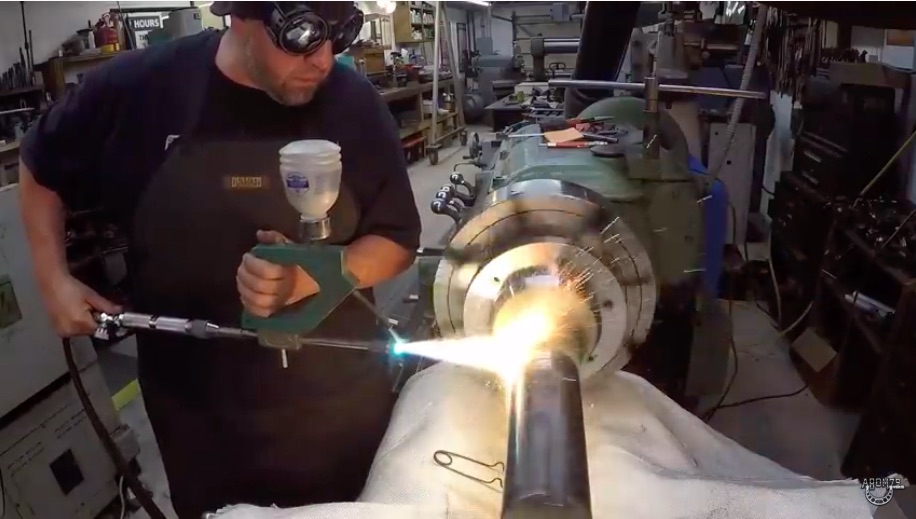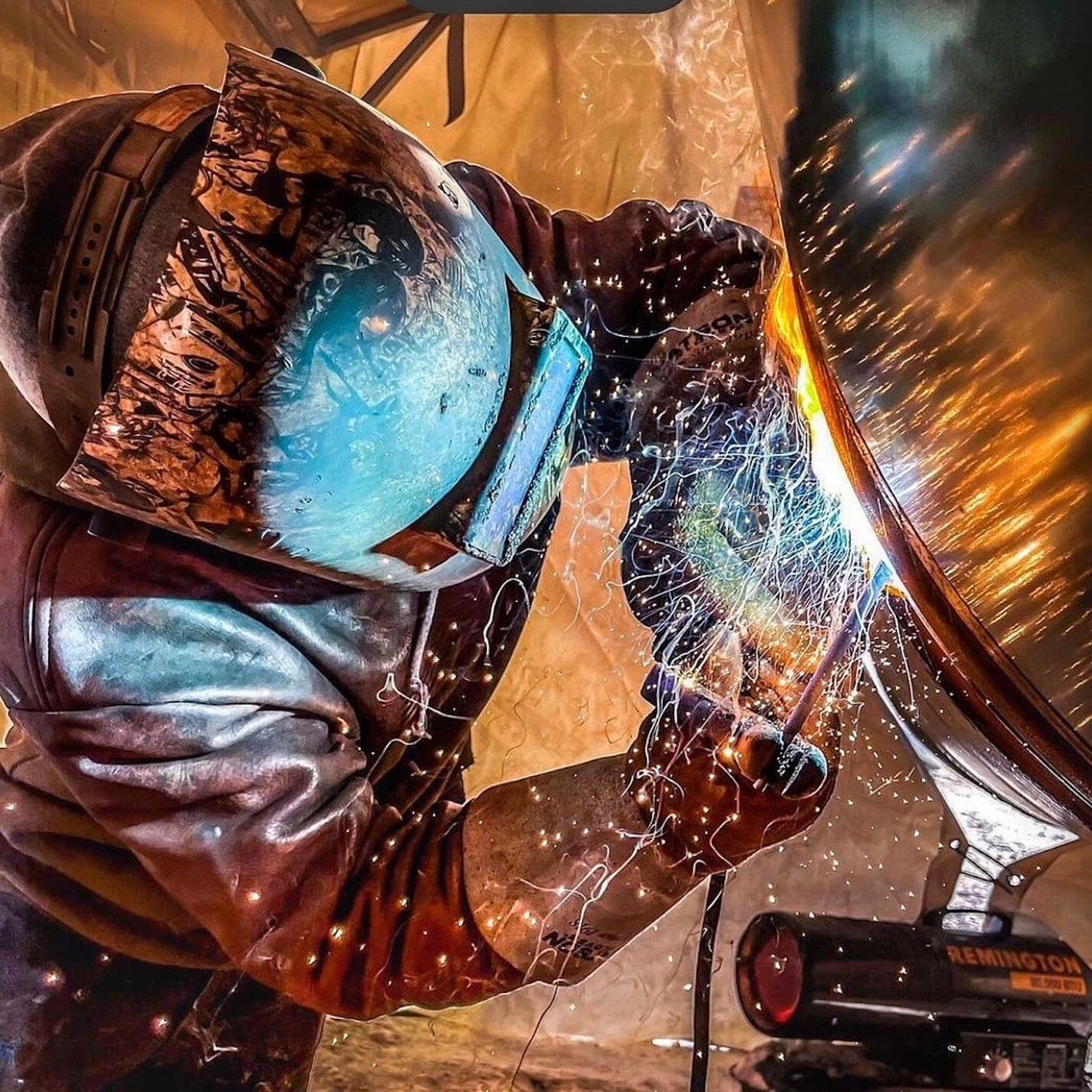What to learn about overheating prevention from Montana Mobile Welding and Repair
Everything about Welding: Secret Insights Into Techniques and Finest Practices for Success
Welding incorporates a variety of techniques, each matched for particular materials and applications. Comprehending these techniques, such as GMAW, SMAW, and TIG, is crucial for attaining perfect outcomes. Moreover, the best devices and safety and security techniques can not be overlooked. As preparation and troubleshooting play crucial duties in the welding process, understanding these elements can considerably enhance the high quality of the final product. What are the essential variables that guarantee an effective weld?
Recognizing Different Welding Strategies
Welding strategies include a selection of methods, each matched to details applications and products. Amongst the most usual techniques are Gas Metal Arc Welding (GMAW), Protected Steel Arc Welding (SMAW), and Tungsten Inert Gas Welding (TIG) GMAW, likewise understood as MIG welding, is preferred for its rate and convenience, making it excellent for thin materials. SMAW, or stick welding, is favored for its simplicity and performance in outdoor atmospheres, specifically with thicker steels. TIG welding provides accuracy and control, making it ideal for intricate work and non-ferrous steels (Montana Mobile Welding and Repair Belgrade). Each technique has its unique benefits and factors to consider, enabling welders to choose the finest method based on the job's requirements, product type, and preferred end results. Understanding these strategies is crucial for successful welding
Vital Welding Tools and Tools
While different welding methods need specific abilities, the right devices and tools are just as essential for attaining quality outcomes. Crucial welding devices consists of welding machines, which differ depending on the method-- such as MIG, TIG, or stick welding. Safety gear, including headgears, aprons, and handwear covers, guarantees safety and convenience during the procedure. In enhancement, fixtures and clamps assist secure products in position, guaranteeing accuracy in welds. Consumables like welding rods, wire, and securing gas are also crucial elements that affect the high quality of the weld. In addition, tools such as grinders and cutters facilitate surface preparation and post-weld finishing, adding to an expert result. Spending in top quality equipment inevitably boosts the performance and performance of welding tasks.
Safety Practices in Welding
Correct safety and security techniques are necessary in the welding sector to protect employees from prospective dangers. Welders have to use suitable personal safety tools (PPE), including helmets with proper shading, gloves, and flame-resistant clothing. Ample ventilation is important to decrease exposure to damaging fumes and gases generated throughout the welding procedure. Furthermore, employees need to be learnt the correct handling of welding devices to avoid accidents. Fire safety procedures, such as keeping combustible materials far from the welding location and having fire extinguishers easily offered, are necessary. Normal assessments of devices and offices can help determine potential dangers prior to they result in crashes. By adhering to these security methods, welders can produce a more secure working environment and minimize risks related to their profession.
Readying Materials for Welding
Preparing materials for welding is an essential action that substantially affects the top quality and integrity of the final item (Belgrade Welding). Correct prep work includes cleaning up the surface areas to get rid of impurities such as dirt, rust, and oil, which can compromise the weld. Techniques such as grinding, fining sand, or making use of solvents are frequently employed to attain a clean surface area. Additionally, making sure that the materials fit together snugly is important; gaps can lead to weak welds. It's also crucial to take into account the positioning and positioning of the components, as this will certainly influence the simplicity of welding and the final outcome. Choosing the ideal filler material and ensuring compatibility with the base metals is necessary for attaining strong, long lasting welds.
Tips for Getting High-Quality Welds
Accomplishing premium welds requires attention to information and adherence to finest techniques throughout the welding process. Appropriate joint prep work is vital, guaranteeing surface areas are clean and cost-free from pollutants. Selecting the appropriate filler product and welding method based upon the base metals is critical for ideal bonding. Preserving constant traveling rate and angle while welding can protect against defects and promote harmony. Additionally, regulating warmth input is necessary; extreme heat can bring about warping and deteriorated joints. Regularly examining the welds during the process enables for instant adjustments if required. Ultimately, using suitable post-weld treatments, such as cleansing and stress relief, can boost the longevity and honesty of the weld, ultimately making certain an effective outcome.
Repairing Typical Welding Issues
Welding commonly presents obstacles that can affect the high quality and integrity of the special info final product. Typical issues such as porosity, inconsistent weld grains, and getting too hot can emerge, each calling for certain fixing techniques. Understanding these troubles is important for welders to improve their skills and attain excellent outcomes.
Porosity Problems Explained
Although porosity can typically be forgotten, it remains a crucial issue in welding that can compromise the integrity of an ended up product. Porosity refers to the existence of small gas pockets within the weld grain, which can lead and weaken the joint to premature failure. This issue commonly occurs from contaminants, dampness, or improper securing gas protection throughout the welding procedure. To reduce porosity, welders need to verify that the base products are dry and clean, make use of proper protecting gases, and keep regular welding parameters. On a regular basis inspecting the equipment and setting can also help identify prospective problems before they show up in the weld. Dealing with porosity properly is important for achieving solid, resilient welds that meet quality requirements.

Irregular Weld Beans
Inconsistent weld grains can significantly impact the quality and toughness of a completed item. Different factors add to this issue, including improper travel rate, incorrect amperage setups, and irregular electrode angles. When the welder moves also swiftly, a grain may show up slim and lack infiltration, while relocating too gradually can create excessive accumulation. In addition, using the incorrect amperage can result in either undercutting or extreme spatter, both of which compromise weld integrity. The welder's strategy, such as inconsistent lantern movement, can likewise cause uneven bead appearance. To mitigate these issues, welders should concentrate on maintaining consistent, controlled motions and ensuring correct equipment setups to achieve uniformity in their welds. Consistency is crucial to achieving strong and reputable welds.
Getting Too Hot and Bending Issues
Extreme warm during the welding procedure can cause click to find out more considerable overheating and contorting issues, influencing the structural integrity of the work surface. These issues frequently materialize as distortion, which can jeopardize positioning and fit-up, making additional assembly challenging. Elements contributing to overheating consist of the selection of welding criteria, such as voltage and travel speed, in addition to the kind of material being bonded. To minimize these concerns, welders should preserve constant travel speed and ideal heat input while monitoring the work surface temperature. Additionally, preheating or post-weld warm treatment can assist relieve stress and anxieties triggered by fast cooling - Montana Mobile Welding and Repair. Routine assessment and adherence to ideal techniques are vital in stopping overheating and making sure the durability and dependability of welded structures
Regularly Asked Concerns
What Are the Career Opportunities in the Welding Market?
The welding sector uses varied job possibilities, consisting of positions as welders, engineers, teachers, and assessors. Experts can operate in production, building, aerospace, and automobile industries, gaining from solid need and competitive incomes in different functions.
Just How Can I Enhance My Welding Speed Without Compromising Top Quality?
To improve welding rate without giving up high quality, one must practice effective methods, preserve equipment, enhance settings, and enhance hand-eye control. Regular training and seeking comments can additionally considerably add to attaining much faster, high-grade welds.
What Accreditations Are Offered for Welders?
Countless certifications exist for welders, including those from the American Welding Society (AWS), the National Center for Construction Education And Learning and Study (NCCER), and numerous industry-specific organizations. These qualifications enhance employability and demonstrate ability proficiency.
Just How Does Welding Influence the Residences of Metals?
Welding affects the residential or commercial properties of metals by Full Report changing their microstructure, which can result in modifications in ductility, firmness, and stamina. Heat input and cooling prices throughout the procedure greatly influence these product attributes.
Can I Weld Dissimilar Metals Together?
